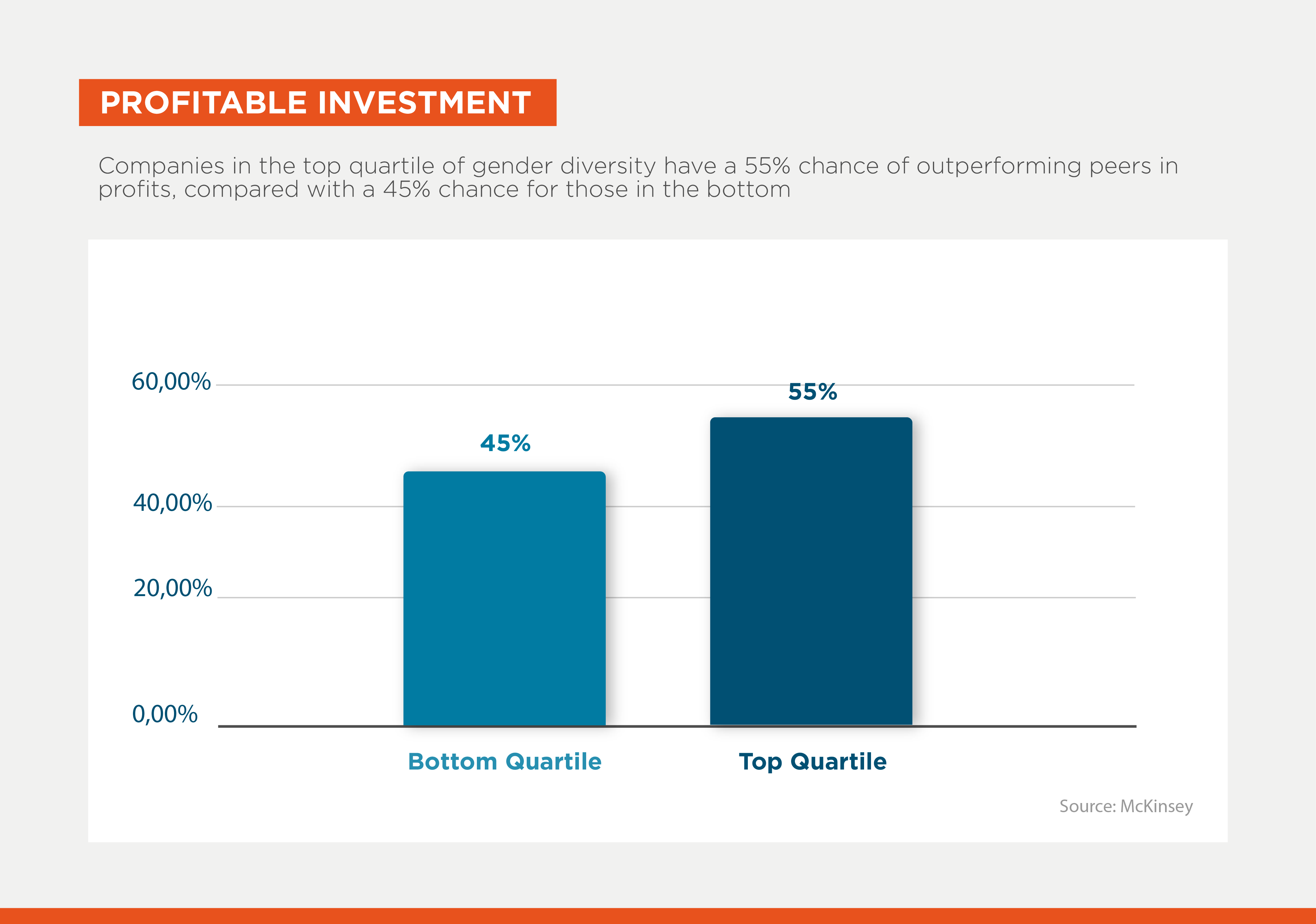Inclusive Procurement 101: How to Integrate Women into Supply Chains

One of the least known challenges around gender integration in the business and corporate world is the current shortage of women-owned enterprises in the supply chains of companies in Latin America and the Caribbean (LAC).
Integrating these women-owned suppliers fosters economic growth, creates employment and helps recruit more women. Including women in value chains is an opportunity to build supplier loyalty and offer new perspectives and ideas for innovation.
It is important to approach this integration with suitable strategies and the best practices to guarantee success. In this blogpost we present the basics of inclusive procurement, based on IDB Invests projects’ experience.
A. Value chain assessment: The first step to integrate female suppliers into the supply chain is to perform a thorough assessment of the existing supply chain to define a correct baseline. The assessment must consider factors like types of goods and services procured, the number and size of suppliers and operational challenges that suppliers may be facing.
B. Supplier database: It is essential to develop a unified database to manage suppliers. The first step is to validate within the system which companies are led by women. We recommend classifying companies as follows: 51% owned by one or more women or over 20% owned by one or more women, with a woman president/vice president and over 30% of women on the board of directors.
To perform a diagnostic, oftentimes we ask the following questions: Do they have a clear production and sales process flow? How often do they enhance the processes, products or services, logistics or other areas? How would you rate the distribution and order delivery service? What type of guarantee (quality, support, maintenance or other) do they offer when selling their products or services? Are there women in leadership roles?
Large international buyers increasingly need to buy from certified suppliers. This exercise helps the anchor company determine whether the suppliers have or should have international certifications or take action to improve their social and environmental practices.
C. Business case, commitment and communication: Gender initiatives are frequently considered as corporate social responsibility, without focusing on the business imperative to diversify the value chain. Multiple studies show that gender equality improves financial performance.
McKinsey & Company showed that companies with more women in their executive teams are 25% more likely to see higher-than-average profitability than those in the lower quartile in terms of female representation.

At IDB Invest, we found out that female suppliers oftentimes deliver their products before the agreed delivery date more frequently than men. Also, a survey by WEConnect International informed that 96% of respondents considered that supplier diversity was important, whereas 86% actively seek supplier diversity when making procurement decisions. Moreover, a study by Hackett Group discovered that companies with a more diverse supplier base usually achieved higher customer satisfaction rates. However, a comprehensive outreach and engagement strategy needs to be created to get to potential women-owned suppliers.
D. Capacity building and training: The procurement team needs to be trained to work with female suppliers and to understand their role in the supply chain integration. Training may also include the promotion of gender equality and inclusion at procurement decision-making.
E. Focus on businesswomen: As a way of completing the cycle, relationship-building with female suppliers must be encouraged, making sure that they receive financing and technical assistance to continue growing their business and improving the quality of their products and services. This may involve communicating regularly with suppliers, offering support and training on quality, business management and other topics that are relevant to them, and providing opportunities to collaborate, network and grow.
F. Financing and factoring: A common barrier for female suppliers is access to financing. It has been noticed that, when they need funding, women-led companies look to retail financing facilities, such as personal accounts or credit cards, and it is harder for them to access productive financing. Companies may help to provide financing by means of loans or investments in female supplier companies.
G. Value chain management: The role of the business managers and executives is crucial to lead all the staff in the right direction. Leadership flows from the top downwards. Senior executives are essential to face this challenge.
H. Tools: The tools that are currently available in the market are fundamental to connect with new businesswomen. For example, the Inter-American Development Bank’s free platform Mujeres ConnectAmericas features women-led or -owned companies, and opens a space for anchor companies to advertise procurement or bidding opportunities, reaching over 65,000 potential female suppliers regionwide.
I. Incentives: A company must set clear goals and objectives to incentivize diverse supply. Having clear goals and objectives provides a roadmap for the integration process and helps companies measure their progress. This may translate into a specific female supplier percentage of the total supply chain or a target number of new contracts to be awarded to women each year. For instance, when it comes to setting goals by buyer and area, you may ask whether there are buyers assigned to each supplier. It may as well be an option to offer buyers an incentive-based reward system. Finally, let’s not forget the demand side of the equation—the ones requesting goods or services from buyers. By asking them to include at least one woman in each bidding process, they will contribute to the process.
The steps described above are not merely anecdotical. Companies in the region are already spearheading best practices for inclusive procurement. Such is the case of Elcatex and San Juan Textiles, textile companies from Honduras that saw the benefits of increasing the amount of women-led supplier SMEs and are now a reference for other companies that want to set up inclusive procurement initiatives.
IDB Invest, which offers both financing and technical assistance, started working with Elcatex and San Juan Textiles by building the business case about the importance of having a more inclusive value chain and the great opportunity ingrained in including businesswomen as part of its productive expansion. To achieve this, it was key to engage the senior management to accept the challenge and create the commitment needed from the whole team. Then, IDB Invest supported the client by assessing the current value chain, and identifying and categorizing their suppliers by size, products, capacity and gender, as well as other information, to get an understanding of their technical support needs. Then, the client launched a program with all the procurement teams to link each female supplier with a procurement officer to build a closer business relationship.
IDB Invest used blended finance funded by WeFi to set annual targets to increase the number of MSME suppliers in seven years, by raising the number of women-led or -owned SMEs in their supply chain by 24% or increasing procurement from suppliers by an aggregate 40%. These goals were set together with the companies’ procurement teams.
The first stage of the project required advisory services to design and deploy a plan for existing and new suppliers, approved by the senior management. Then, Elcatex and San Juan Textiles trained the whole procurement team in inclusive supply matters. Moreover, new alliances were formed to search for suppliers, with institutions, such as WeConnect, Fundes, the chamber of commerce, financial agencies, etc.
This comes to prove that integrating women-owned suppliers in the company’s supply chains is an important step to promote diversity and improve business outcomes.
So far, Elcatex and San Juan Textiles have doubled the number of female supplier SMEs in their value chain, up to 53 from 21 two years ago.
LIKE WHAT YOU JUST READ?
Subscribe to our mailing list to stay informed on the latest IDB Invest news, blog posts, upcoming events, and to learn more about specific areas of interest.
Subscribe



